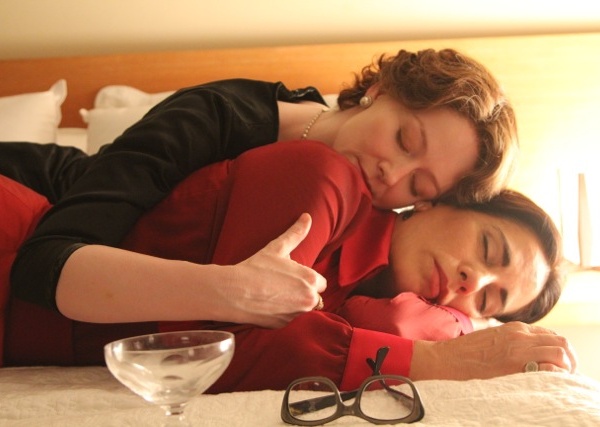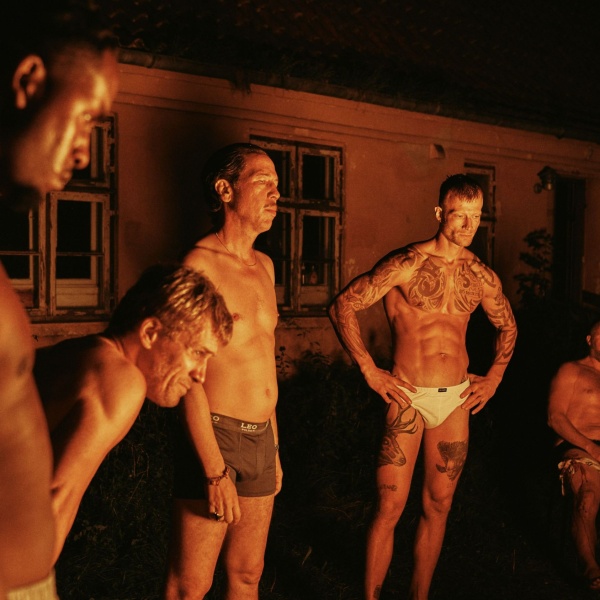
Across his 40 year career as Hollywood’s most beloved filmmaker, Steven Spielberg has tried his hand at many different things — the blockbuster thrill ride, the family film, the comedy, the war film, hardcore science-fiction, serious dramas and whatever it was that “The Terminal” was, a diverse range of pictures united by that certain Spielberg je-ne-sais-quoi. But there’s something he’s never tackled directly himself; the animated film. Sure, he’s produced TV cartoons like “Animaniacs,” and even the occasional big-screen one, like “An American Tail” and “We’re Back,” but for the most part, the Bearded One has always preferred live action to ink and pixels.
But the duck has been broken, with the director teaming with another titan, Peter Jackson, for an adaptation of the hugely popular (internationally, at least) Hergé comic books “The Adventures of Tintin.” The books, which focus on a youthful Belgian journalist and his adventures, began in 1929, sold 350 million copies worldwide, and have long been linked with Spielberg; he discovered them after international press drew comparisons on the release of “Raiders of the Lost Ark,” and creator Hergé was said to have believed that Spielberg was the only filmmaker who could bring his character to the screen. A script was commissioned from “E.T.” writer Melissa Mathison, but it never happened, and it was only when Jackson suggested that the performance-capture technique that he pioneered with the “Lord of the Rings” films would be the best way to make the film that it became a reality.

The film’s finally arrived, opening on Wednesday in Europe ahead of the U.S. release at Christmas, and it sees Spielberg taking a few more leaps in his work — it’s not just his first animation, and first time with performance capture, but it also marks his first movie in 3D. And the happy news is that he’s taken to the technology like a duck to water; it’s easily his most enjoyable film since at least “Minority Report,” a charming, thrilling picture that makes the very best use of the cutting-edge tools it has to play with, while also paying tribute and honoring the source material.
The plot, scripted by “Doctor Who” and “Sherlock” showrunner Steven Moffat, along with Edgar Wright and Joe Cornish, combines aspects of two of the books, 1943’s “The Secret of the Unicorn” and 1944’s “Red Rackham’s Treasure,” without quite following them to the letter, and bringing in elements from elsewhere in the series (most particularly 1941’s “The Crab With The Golden Claws“) . It begins as Tintin (Jamie Bell), and his faithful hound Snowy, come across a model pirate ship in a Brussels market. The journalist picks it up for a song, but soon finds that the ship is being hunted by the malevolent Ivan Sakharine (Daniel Craig), who needs it to help locate a long-missing haul of treasure. Tintin is then thrust into an adventure, where he crosses paths with Captain Archibald Haddock (Andy Serkis), a drunken sailor who turns out to be linked more closely to the quest than he imagines. 
The biggest question mark of the project has always been the decision to go fully motion-capture with the film; Robert Zemeckis‘ films with the technique, with their dead-eyed characters, have soured many on the technique, and early stills and footage had raised the alarm for some. But happily, it works like a charm here. Spielberg seems energized by the technology, having more fun than he’s had in years, with a playful touch that’s fully of a piece with his best blockbusters. Perhaps more importantly, it lets the actors truly disappear into their roles. While Zemeckis used the films to display eerie variations on Tom Hanks or Jim Carrey, the characters here are firmly Hergé’s creations; it’s almost impossible to spot Bell, or Serkis, or Craig, or Simon Pegg and Nick Frost (as bumbling Interpol agents Thomson and Thompson).
It helps that pretty much everyone involved nails the roles. Tintin has never been a particularly interesting role, but Bell gets the curiosity and adventurous spirit down, while not being afraid to play up his priggish qualities. Serkis, meanwhile, is the film’s heart and soul, genuinely moving amid the comic relief, Craig feels more engaged than he has for anything in a while, relishing the chance to play nasty, and Pegg and Frost are pretty much perfect (even if their characters feel a little peripheral, but that’s true of most of the books, if we’re being honest). Best of all is the one character who’s entirely the result of WETA‘s animators — Snowy is an absolute delight. Brave, silly and kick-ass, he gives the little mutts in “The Artist” and “Beginners” a run for their money as the best on-screen pup of the year, and should be a real favorite for kids this Christmas. 
And they get a doozy of an adventure to go on, for the most part. The script is as tight as a drum, starting right in the thick of it and barely letting up for the next two hours, without ever feeling frantic or overstuffed. The mystery aspects (given a stylish, German Expressionism noir sheen by Spielberg) are compelling, but it’s the action where the filmmaker really starts to have fun. No longer being tied to physical camera moves gives everything a fluid, coherent feel, which matched with his rarely-matched sense for gags and beats, adds up to a handful of set-pieces — Snowy’s pursuit of a kidnapped Tintin, an escape from a boat, a close brush with an airplane propellor — that are as thrilling and witty as any in his career to date.
Best of all is a North African-set chase sequence, in a seemingly unbroken take, that juggles Tintin, Snowy, Haddock, Sakharine, a dive-bombing falcon, a tank and a runaway hotel, that’s easily the best action scene in a long while, and arguably our five favorite minutes of cinema of 2011. If everything that comes afterwards fails to live up to it, it’s mainly because the scene is so good. 
And there is, undoubtedly, a slight sense of anticlimax to the film’s third act; the plotting feels a little like backtracking, the final action scene is the weakest in the movie, and the sequel-baiting conclusion is just a little too unsatisfying; we would have happily sat through another twenty minutes if it meant wrapping up the loose ends. But there are worse problems to have than being left wanting more, and we hope that the box office is strong enough to lead to future “Tintin” adventures.
There are other issues here — an extended flashback half way through might outdo anything in the “Pirates of the Caribbean” series for swashbuckling action, but it also stops the film dead in its tracks, and while John Williams‘ score is solid,it lacks an iconic theme. It remains to be seen if “The Adventures Of Tintin” will connect with U.S. audiences; it’s resolutely old-fashioned, from its youthful hero to the slapstick humor. But if it doesn’t, there’ll be a lot of people missing out on one of the best times at the movies we’ve had in a long while. [B+]




